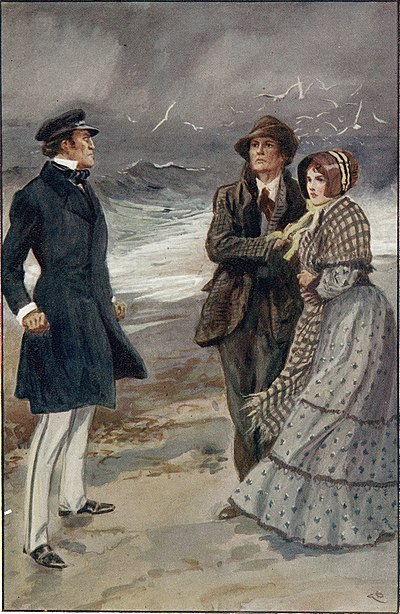Adaptations
The White Circle , a silent film, was released in 1920, starring Spottiswoode Aitken as Bernard Huddlestone, Janice Wilson as Clara Huddlestone, Harry Northrup as Northmour, and John Gilbert as Frank Cassilis.

The White Circle is a lost 1920 American drama silent film directed by Maurice Tourneur and written by John Gilbert and Jules Furthman. The film stars Spottiswoode Aitken, Janice Wilson, Harry Northrup, John Gilbert, Wesley Barry, and Jack McDonald. It is based on the short story "The Pavilion on the Links" by Robert Louis Stevenson. The film was released on August 22, 1920, by Paramount Pictures.
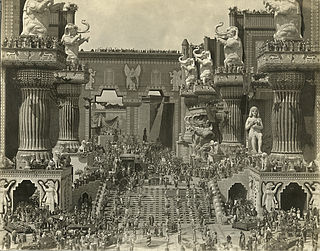
A silent film is a film with no synchronized recorded sound. In silent films for entertainment, the plot may be conveyed by the use of title cards, written indications of the plot and key dialogue lines. The idea of combining motion pictures with recorded sound is nearly as old as film itself, but because of the technical challenges involved, the introduction of synchronized dialogue became practical only in the late 1920s with the perfection of the Audion amplifier tube and the advent of the Vitaphone system. The term "silent film" is a misnomer, as these films were almost always accompanied by live sounds. During the silent-film era that existed from the mid-1890s to the late 1920s, a pianist, theater organist—or even, in large cities, a small orchestra—would often play music to accompany the films. Pianists and organists would play either from sheet music, or improvisation. Sometimes a person would even narrate the intertitle cards for the audience. Though at the time the technology to synchronize sound with the video did not exist, music was seen as an essential part of the viewing experience.
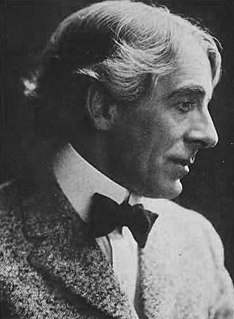
Frank Spottiswoode Aitken was a Scottish actor of the silent era. He was perhaps best known for his role as Dr. Cameron in The Birth of a Nation (1915).
The Pavilion, a direct-to-video release, came out in 1999, starring Craig Sheffer as Frank Cassilis, Patsy Kensit as Clara Huddlestone, Richard Chamberlain as Huddlestone, and Daniel Riordan as Northmour.
Direct-to-video or straight-to-video refers to the release of a film to the public immediately on home video formats rather than a theatrical release or television broadcast.
Craig Eric Sheffer is an American film and television actor. He is known for his leading roles as Norman Maclean in the film A River Runs Through It, Aaron Boone in the film Nightbreed, and Keith Scott on the television series One Tree Hill.

Patricia Jude Francis Kensit is an English actress, singer, model, and former child star. She was lead singer of the band Eighth Wonder from 1983 to 1989. Between 2004 and 2006, Kensit played the role of Sadie King in the ITV soap opera Emmerdale. Following this, she played Faye Byrne in the BBC One medical drama Holby City from 2007 until 2010 and for an episode in 2019. Kensit has been married to musicians Dan Donovan, Jim Kerr, Liam Gallagher, and Jeremy Healy.

One Thousand and One Nights is a collection of Middle Eastern folk tales compiled in Arabic during the Islamic Golden Age. It is often known in English as the Arabian Nights, from the first English-language edition, which rendered the title as The Arabian Nights' Entertainment.

William Wilkie Collins was an English novelist, playwright and short story writer best known for The Woman in White (1859) and The Moonstone (1868). The last has been called the first modern English detective novel. Born to the family of a painter, William Collins, in London, he grew up in Italy and France, learning French and Italian. He began work as a clerk for a tea merchant. After his first novel, Antonina, appeared in 1850, he met Charles Dickens, who became a close friend and mentor. Some of Collins's works appeared first in Dickens's journals All the Year Round and Household Words and they collaborated on drama and fiction. Collins achieved financial stability and an international following with his best known works in the 1860s, but began suffering from gout. Taking opium for the pain grew into an addiction. In the 1870s and 1880s his writing quality declined with his health. Collins was critical of the institution of marriage: he split his time between Caroline Graves and his common-law wife Martha Rudd, with whom he had three children.

James Payn, was an English novelist. Among the periodicals he edited were Chambers's Journal in Edinburgh and the Cornhill Magazine in London.

William Edward Norris was an English novelist and writer of short stories. Norris wrote over 60 novels; the Encyclopædia Britannica, 11th (ed), published in 1911, listed the following as his best to that date: Mademoiselle de Mersac (1880), Matrimony (1881), No New Thing (1883), My Friend Jim (1886), The Rogue (1888), The Despotic Lady (1895), Mathew Austin (1895), The Widower (1898), Nature's Comedian (1904) and Pauline (1908).

Charles Grant Blairfindie Allen was a Canadian science writer and novelist, educated in England. He was a public promoter of evolution in the second half of the 19th century.

Sinbad the Sailor is a fictional mariner and the hero of a story-cycle of Middle Eastern origin. He is described as hailing from Baghdad during the early Abbasid Caliphate. In the course of seven voyages throughout the seas east of Africa and south of Asia, he has fantastic adventures in magical realms, encountering monsters and witnessing supernatural phenomena.

Ali Baba and the Forty Thieves is a folk tale included in many versions of One Thousand and One Nights. Antoine Galland, who heard the story from Syrian storyteller Hanna Diyab, added it to the Nights in the 18th century. It is one of the most familiar of the "Arabian Nights" tales, and has been widely retold and performed in many media, especially for children, where the more violent aspects of the story are often suppressed.
"The Raggle Taggle Gypsy", is a traditional folk song that originated as a Scottish border ballad, and has been popular throughout Britain, Ireland and North America. It concerns a rich lady who runs off to join the gypsies. Common alternative names are "The Raggle Taggle Gypsies O", "The Gypsy Laddie(s)", "Black Jack David" and "Seven Yellow Gypsies".

"J. Habakuk Jephson's Statement" is an 1884 short story by young Sir Arthur Conan Doyle. It is in the form of a first-person testimony by a survivor of the Marie Celeste, a fictionalised version of the Mary Celeste, a ship found mysteriously abandoned and adrift in the Atlantic Ocean in 1872. Conan Doyle's story was published anonymously in the January 1884 issue of the respected Cornhill Magazine.

Julian Hawthorne was an American writer and journalist, the son of novelist Nathaniel Hawthorne and Sophia Peabody. He wrote numerous poems, novels, short stories, mystery/detective fiction, essays, travel books, biographies, and histories. As a journalist, he reported on the Indian Famine for Cosmopolitan magazine and the Spanish–American War for the New York Journal.
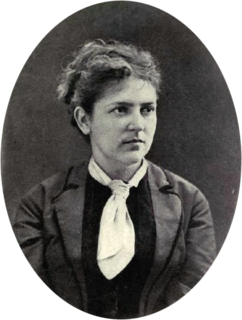
Frances (Fanny) Matilda Van de Grift Osbourne Stevenson was an American magazine writer. She became a supporter and later wife of Robert Louis Stevenson, and the mother of Isobel, Samuel Lloyd Osbourne, and Hervey Stewart Osbourne.
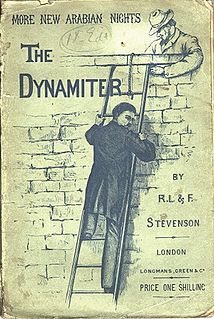
More New Arabian Nights: The Dynamiter (1885) is a collection of linked short stories by Robert Louis Stevenson and Fanny van der Grift Stevenson.
Island Nights' Entertainments is a collection of short stories by Robert Louis Stevenson, first published in 1893. It would prove to contain some of his final completed work before his death in 1894.
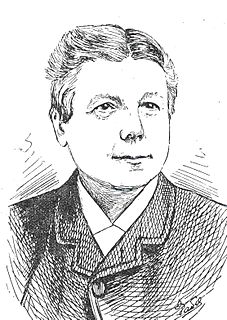
Duncan MacGregor Crerar was a Scottish poet who spent much of his adult life in western Ontario and New York City, writing sentimental poetry commemorating places and friends in Scotland. A native Gaelic speaker, he wrote primarily in English, with Gaelic phrases and diction. He was referred to by some contemporaries as "The Breadalbane Bard" or "Bard of Amulree". In his book Scottish Poets in America, John D. Ross described him:
In conclusion, we would state that Mr. Crerar is one of the most genial of men, kind, sympathetic, and generous in all his actions. In his own quiet, unobtrusive way, and unknown to the world, he has rendered assistance to many when they found the clouds of adversity hovering over them: and there are few men similarly circumstance who can boast of so large and so sincere a following of friends.
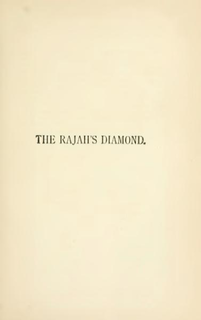
The Rajah's Diamond is a cycle of four short stories by Robert Louis Stevenson. First published in 1878 in a serial periodical London Magazine, they were republished in the first volume of New Arabian Nights. The stories are:
The (Bonnie) Rantin' Laddie or Lord Aboyne is a traditional Scottish folk ballad telling of the valiant rescue of his lover by a noble Highland lord.
This page is based on this
Wikipedia article Text is available under the
CC BY-SA 4.0 license; additional terms may apply.
Images, videos and audio are available under their respective licenses.
